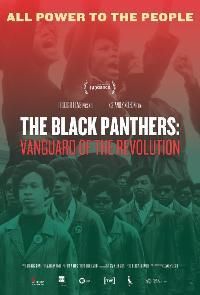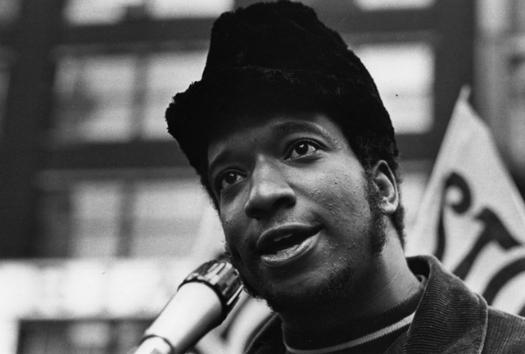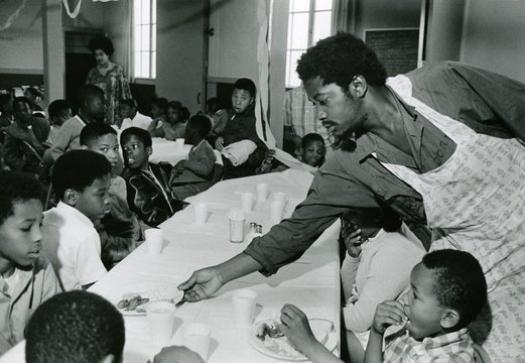
CounterPunch (October 9, 2015)
SF Bay View (October 16, 2015)
Copyright © 2015 Marc Norton
 The title of Stanley Nelson’s new documentary film, The Black Panthers: Vanguard of the Revolution, says it clearly. The Black Panther Party was, in its day, the leading organizational expression of the revolutionary forces in the United States. When Huey Newton and Bobby Seale founded the Party in 1966, they were riding a wave of rebellion that had engulfed Black America – from boycotts, sit-ins and Freedom Rides in the South, to mass riots and near-insurrections in the Black ghettoes of the North. The title of Stanley Nelson’s new documentary film, The Black Panthers: Vanguard of the Revolution, says it clearly. The Black Panther Party was, in its day, the leading organizational expression of the revolutionary forces in the United States. When Huey Newton and Bobby Seale founded the Party in 1966, they were riding a wave of rebellion that had engulfed Black America – from boycotts, sit-ins and Freedom Rides in the South, to mass riots and near-insurrections in the Black ghettoes of the North.
Nelson’s film documents what those who lived through it already know – that the Panthers quickly became a mass movement throughout the country. Their message of unqualified resistance to racism, armed self-defense and anti-capitalist revolutionary politics galvanized the creation of chapters of the Party in nearly every city and state of the US. The film includes segments that focus on New York, Chicago and Los Angeles, in addition to the Panther’s home base in Oakland, but can only scratch the surface in its 113 minutes.
Support for the Panthers was broad and deep, as the film makes clear, surviving and flourishing even while Newton was locked up for the alleged murder of a police officer, and Seale faced a series of trumped-up criminal charges. Others, including Eldridge Cleaver, David Hilliard and Elaine Brown rode the tiger of leadership of the Party, but it was the rank-and-file of the many Party members who kept the fire burning.
The film does a good job of showing the operation of the Panther’s Free Breakfast program, which itself was an expression of the mass character of the Party. How many people today know that this Black Panther program was the template for the free breakfast and free lunch programs in schools throughout the nation today?
The period when the Party was at its peak, in the late 60s and early 70s, was also the heyday of the mass youth revolt and the anti-Vietnam War movement that has come to be known as “The Sixties.” Despite all the rewriting of history that has occurred since that fateful time, this was a period in which millions in the US believed that revolutionary change was in the air, that imperialist war, capitalist exploitation and racism needed to die, and that radical change was not only possible but also inevitable.
That is precisely why the forces of repression in the US government needed to wreck the Black Panther Party, the vanguard of that revolutionary movement. The result was, as is portrayed in the film, COINTELPRO – the Counter Intelligence Program organized and implemented by J. Edgar Hoover’s FBI to harass, discredit and destroy the Black Panthers and other revolutionary organizations by every dirty trick imaginable, up to and including trumped-up criminal charges and outright assassination.
The film includes considerable footage of Fred Hampton, the leader of the Panthers in Chicago. Hampton was a charismatic young man who was well on his way to building a strong and powerful organization, uniting not only the Black community but many other potential allies. One of the most moving sequences in the film is a shot of Hampton leading a multi-racial mass meeting in Chicago, bringing them to their feet, fists in the air, chanting “I am a revolutionary!”
Not long after that Hampton was dead, murdered in his bed by Chicago police.
 |
Just four days later, as shown in the film, Los Angeles police attacked the Panther’s office on Central Avenue, as part of an effort by the LAPD to show that they were the “dominant force.” Instead, their attack provoked a shootout in which the Black Panther defenders held off the police for hours, eventually emerging relatively unscathed, embarrassing the LAPD no end.
William Pharr, one of the LA Panther defenders, published his autobiography – Nine Lives of a Black Panther: A Story of Survival – in 2014, including an account of the shootout.
“I have no illusions about a postracial society that supposedly came into being after Barack Obama became President… I am not afraid to say that at this time, on this day, on this earth, an organization similar to the Black Panther Party for Self-Defense is still necessary.”
Nelson’s film does not shy away from the story of the demise of the Party. COINTELPRO and the massive state persecution of the Panthers put the organization on the defensive, and exacerbated existing political tensions, setting the stage for a very public split between Newton and Cleaver in 1971. With Cleaver in exile in Algeria, Newton controlled the Party apparatus, such as it was. He built up a cult of personality, calling himself the “Supreme Servant of the People.” In 1972, Newton shut down the every chapter outside of Oakland, and put the Party’s reputation on the line in an attempt to get Seale elected Mayor of Oakland. Seale gave the powers-that-be in Oakland a run for their money, but came in second, leaving the Party politically adrift.
Much has been written by and about the Panthers. But Nelson’s film is the best short introduction to the Party to date. Young politically-minded people should see it and learn some history of revolutionary politics in the US. Older politically-minded people who have gotten fuzzy about the lengths to which our ruling class will go to stamp out opposition should also see the film.
The film ends with the statement that 20 Black Panthers are still in prison, over four decades after the Party rocked the nation. And those 20 Panthers do not include the countless others who were murdered, or had their lives disrupted and wrecked because of their commitment to the liberation of the people. That in itself tells you how dangerous this movement was to the rulers, and how dangerous its true history remains today.
You can find out about upcoming screenings of “The Black Panthers: Vanguard of the Revolution” at www.TheBlackPanthers.com.
 |
|